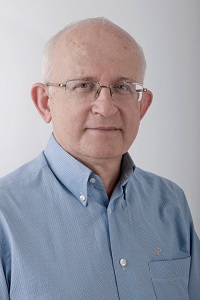
Scientists at the Large Hadron Collider (LHC) of the CERN laboratory in Geneva reported last week the discovery of a new subatomic particle, which could open the door to searching for and locating new, stable particles that have never before been seen. The newly discovered particle, called Tcc+, is a tetraquark comprising two quarks and two antiquarks. The discovery, more than a decade after the accelerator was inaugurated with the goal of discovering the Higgs boson (a task it accomplished successfully), was announced at the European Physical Society’s biannual conference on high-energy physics. It confirms a prediction made in a paper co-authored by Professor Marek Karliner of Tel Aviv University, head of the High Energy Physics Committee of The Israel Academy of Sciences and Humanities.
An article about the discovery was also featured in Nature Magazine.
The existence of baryons, comprising three quarks, and mesons, comprising a quark and an antiquark, has been known for some time. In recent years, experiments have begun to confirm the existence of surmised “exotic” particles comprising four or five quarks, arranged in a specific way. Only recently has technology matured sufficiently to identify these particles, which are unstable and decay relatively quickly into ordinary mesons and baryons. The experiments are conducted via computer analysis of the collisions of proton beams moving at 99.999999% of the speed of light in the
LHC accelerator, a ring with a circumference of 27 kilometers located about 100 meters underground, at one point adjacent to the CERN headquarters.
The recently discovered particle is a tetraquark comprising a special and novel arrangement of “heavy” and “light” quarks. Its “lifetime” is at least three times that of the exotic particles discovered so far. Its existence was predicted in a paper published in Physical Review Letters in 2017 by Professor Karliner of the School of Physics and Astronomy at Tel Aviv University and Professor Jonathan Rosner of the University of Chicago. Although Karliner and Rosner predicted the existence of another tetraquark of greater importance to science, their calculations are relevant to the type of particle that was just discovered, and strengthen the belief that the particle whose existence they predicted indeed exists in Nature.
“We showed there, credibly, that an exotic particle of this kind will be stable with respect to the strong nuclear force – something that is not known to us in Nature today,” Karliner said in an interview with Haaretz. “Until now, there has been a question as to how precise this theoretical prediction is. Since the mass of the particle that was just found was predicted in the same paper and the prediction turned out to be highly accurate, this strengthens the theoretical prediction of the other particle, which will be a completely new type of subatomic matter.” The scientists at CERN will now be searching for the subatomic particle whose existence Karliner and Rosner predicted.
The property that sets apart the tetraquark whose existence they predict, said Professor Karliner, is that it is stable, unlike all the exotic particles discovered so far. “The new discovery provides us with very strong evidence, although not direct experimental evidence, of the theoretical prediction that matter of this kind indeed exists and is very stable,” Professor Karliner told Haaretz.